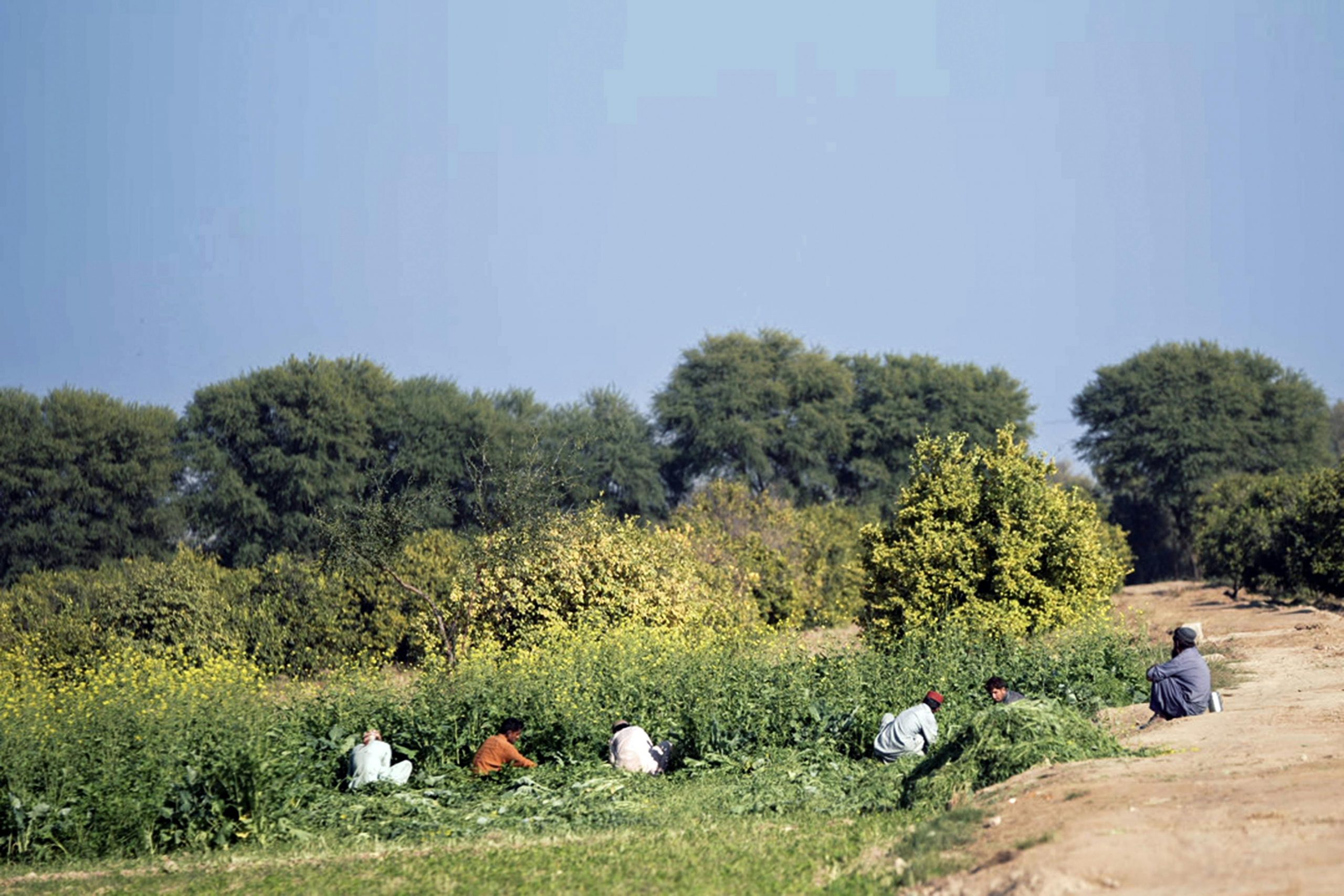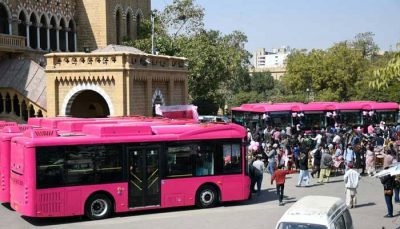The lack of women’s participation in Pakistan’s economy is both a gender equity and a developmental concern. Estimates have suggested that if women’s economic participation is at par with men, the country’s GDP can increase by 30 percent. Improving women’s economic participation is critical to fulfilling the global agenda of inclusiveness and women empowerment – now a Sustainable Development Goal. The right to equal economic opportunity is also enshrined in Pakistan’s constitution. However, only 22 percent of working-age women are currently employed in the labour force.
To discuss the constraints that keep women away from the workplace, and brainstorm solutions to empower them, the Consortium for Development Policy Research (CDPR) brought together a panel of experts, each working in their own capacity to remove barriers to women’s economic empowerment.
Policy environment
Pakistan is a legislation and commitment rich country, having signed an array of gender-related conventions and treaties, including CEDAW and UDHR. However, Nida Usman, a lawyer and founder of the Women in Law initiative, points out that a selective enforcement of policies, presence of obsolete laws and lack of specific legislation that actively prohibits gender discrimination has resulted in the absence of an overarching legal framework to support women’s economic participation.
So far the government has been unable to ensure equal pay, while the provision of maternity benefits remains ambiguous. Even though the constitution guarantees maternity leave, Punjab’s maternity law (which offers a 12-week leave compared to 36 weeks in India) is only applicable after 4 months of employment. Unlike in India, Pakistan has no provision for flexible work arrangements, and a considerably shorter 7-day paternity leave (compared to 15 days in India) helps reinforce adverse gender stereotypes.
Similarly, finance and banking laws also make it harder for women to access credit, a key resource for economic empowerment. While microfinance is targeted mainly at women, the amount offered is too low to allow setting-up of sustainable businesses. To apply for a larger, more sizeable loan women often need unrelated male guarantors.
Where suitable legislation does exist, implementation remains a challenge. For example, the Punjab Fair Representation of Women Act 2014 requires that a third of all representative of boards of statutory organizations, public sector companies, and special committees are women. Without an adequate enabling environment that offers men and women equal opportunities to work, government is struggling to enforce this. Men are often unwilling to share this space with women. Where women do take up such posts they lack the tools to participate effectively.
Why are women not willing to work
While there is a complex web of constraints, the policy talk focused on a few key ones
- Patriarchal mind-sets
Pervasive discrimination and regressive social norms remain prominent barriers to achieving gender parity within the economic space. Nida Usman elaborated that anachronistic attitudes are most pronounced amongst the middle strata of the society and that the relationship between the choice to work and income is not linear.
Social norms about appropriate behaviour for women and the enforcement of these norms by family and society dictates their ability to seek employment. Women belonging to the poorest segment of the population often have to work, while the those amongst the educated elite class choose to work. Hence, the constraints to women entering the workforce are experienced most within the urban middle-income segment.
- Access to mobility
Getting to work remains a major challenge for most Pakistani women. In fact, when women can’t leave their homes, it is difficult to find a job in the first place. Female economic participation can double if women are able to find a suitable job, especially as home-based work offers limited returns to education.
Kate Vyborny, researcher from Duke University and currently at the Centre for Economic Research Pakistan, presented findings of an IGC funded study that is looking at the impact of women’s mobility on their labour market integration. Transport options can influence women’s options for work. Women also need to feel and be safe in public spaces – getting to and from stops. Kate finds that in a fourth of the thousand households surveyed women used buses without women-only compartments. Women-only buses operate only on select routes. Industries relying heavily on women or wanting a diverse workforce are more inclined to offer women-only transport.
The research scope is further extended by introducing a job-matching service to find that a fourth of the recruitments happen by word of mouth. Since women don’t have access to the same kind of social network as men, they are further disadvantaged in finding the right job.
- Burden of unpaid care and domestic work
Family and responsibility for household work also constrain women’s mobility and time. Accounting for both unpaid care and paid work, Pakistani women work up to 10 times more than men. According to the last Time Use Survey covering around 8,000 households not only do women spend more time than men on housework, unemployed men do not end up taking a greater burden of these activities. Excessive workload impedes their access to skills development and financial services, eventually disabling them from participating effectively in economic spaces.
Addressing constraints
Recent policy initiatives by the Punjab Government have attempted to address these binding constraints. The Strategic Reforms Unit (SRU) at the Chief Minister’s office is actively pursuing solutions to open up the labor market for women. The Unit reports directly to the political leadership and works with multiple partners that include politicians, law makers and the media. Fatima Khalid, a junior associate at SRU, discussed the on-going and future initiatives of the Punjab government aimed at enhancing public space for women, such as the Women on Wheels (WoW) initiative.
The campaign – a motorbike subsidy scheme – was launched in collaboration with the transport department and the respective city traffic police in five cities across Punjab. This initiative has a dual objective – to enable women’s participation in the economic space, and to promote social change. It aims to provide over 3,000 customised motorbikes at a subsidised rate through transparent balloting. The campaign has thus far been a success despite the patriarchal notions that discourage the acceptability of women riding motorbikes. The SRU has so far trained over 3500 women.
The province is also taking steps towards combating gender-based violence, which is often linked to recalibration of gender roles and power dynamics. To this end, the Punjab Government is setting up district-level Violence Against Women Centers (VAWC) across the province to ensure implementation of the recently promulgated VAW legislation. These centers will be overlooked by a proposed Women Protection Authority. At the same time the government is also including a gender sensitization component to the high-school curriculum in grades 9 and 10.
Looking ahead
While we continue to celebrate recent gains in advancing women’s economic empowerment, we must not lose sight of the challenges that remain. Efforts to encourage more women in the workspace should also focus on creating an environment that allows for practical enforcement of gender-responsive policies.
Gender stereotypes operate into the policy sphere and influence the design of gender-specific laws. However, equality before the law and gender sensitization in the design of programs is essential in creating the right policy environment. Governments therefore need to formulate policies that consistently facilitate a transformation of deep-rooted social norms
Kate’s research findings provide a substantive policymaking direction. Government should continue the expansion of high quality transport to suburban and peri-urban areas in and around major cities, which still lack mobility solutions. More specifically, to improve women’s mobility and at the same time encourage a more efficient use of resources, introducing women only compartments (as opposed to entire buses) is more sustainable. Other interventions such as announcement of fixed schedules and provision of secure bus stops can allow women to pre-plan their travels.
Finally, the strength of these and other emancipatory policies has to be supported by a concerted focus on implementation mechanisms. Without clear roadmaps for responsibilities, effective allocation of resources, and ownership by public officials, the goal of increased empowerment will remain unfulfilled.
Hina Shaikh is a Country Economist at the International Growth Centre (IGC).




